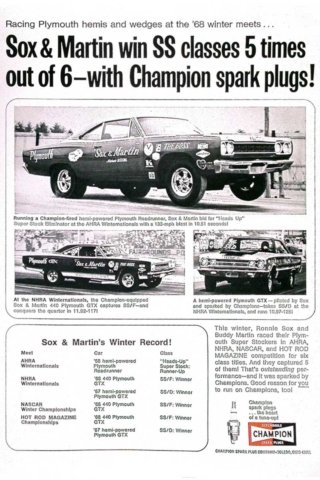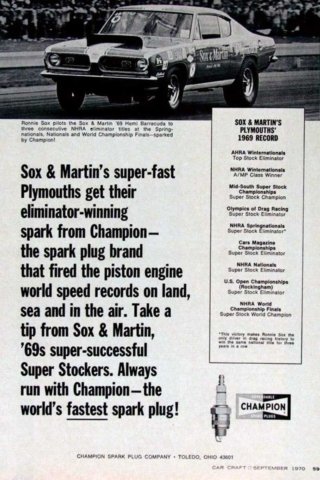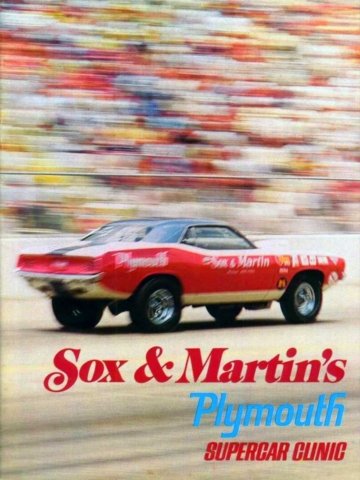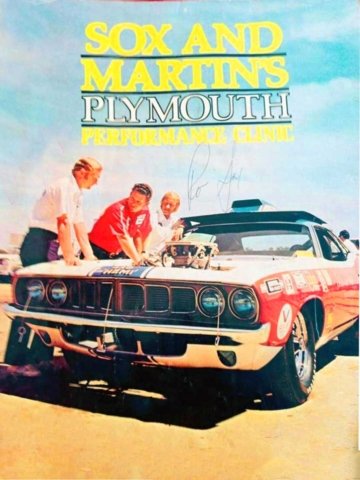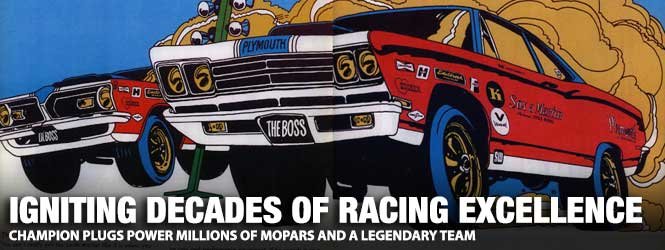
Champion, founded by Albert Champion, is one of the cornerstone names in ignition technology, with a history that mirrors the development of the automobile itself. It was established in 1905 in Boston, Massachusetts. By 1910, after its relocation to Toledo, Ohio, it had quickly established itself as the OE supplier for companies such as Chrysler, Ford, and GM.
Above: Champion spent advertising money to market their spark plugs. The team of Sox & Martin ensured it was money well spent. Sox & Martin dominated Super Stock and Modified Production during the late 1960s.
By the 1920s, Champion was the world’s largest spark plug manufacturer, with a global distribution network. During the 1950s–1970s, Champion had become the spark plug brand in American racing. They were not just selling plugs; they built an entire performance marketing plan around supporting racers, testing under extreme conditions, and then using that success in advertising.
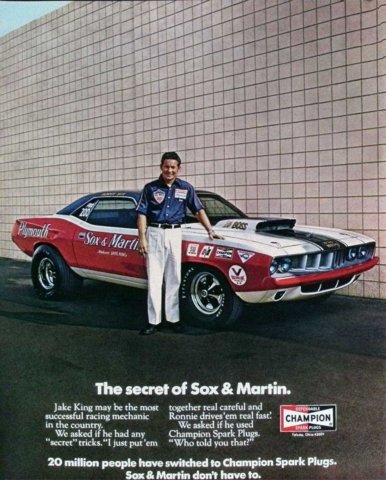
Champion’s line of spark plugs became famous for their consistency and reliability, as well as their variety of heat ranges and proven success in competition. In a 426 Hemi turning 8,000+ RPM in Pro Stock trim, racers could not afford spark scatter or misfires. Champion’s racing line (including specially heat-rated plugs) was known to fire cleanly even under high compression and nitro or race fuel loads.
To meet the needs of racers and street enthusiasts, Champion offered plugs in dozens of heat ranges, which was critical when needed to dial in for different tracks, weather, fuel blends, or for a daily driver.
A mis-matched plug could melt or foul; Champion gave them options that worked. Champion plugs were used in Indy, NASCAR, drag racing, and even aviation. That reputation for durability made them the go-to in virtually every form of racing.
Sox & Martin used Champion because of a factory connection. Chrysler engineering had long used Champion as its OE supplier. That meant the development baseline for Hemis and wedge engines was already established around Champion plug specs. Sox & Martin, as Chrysler’s showcase team, naturally continued that relationship.
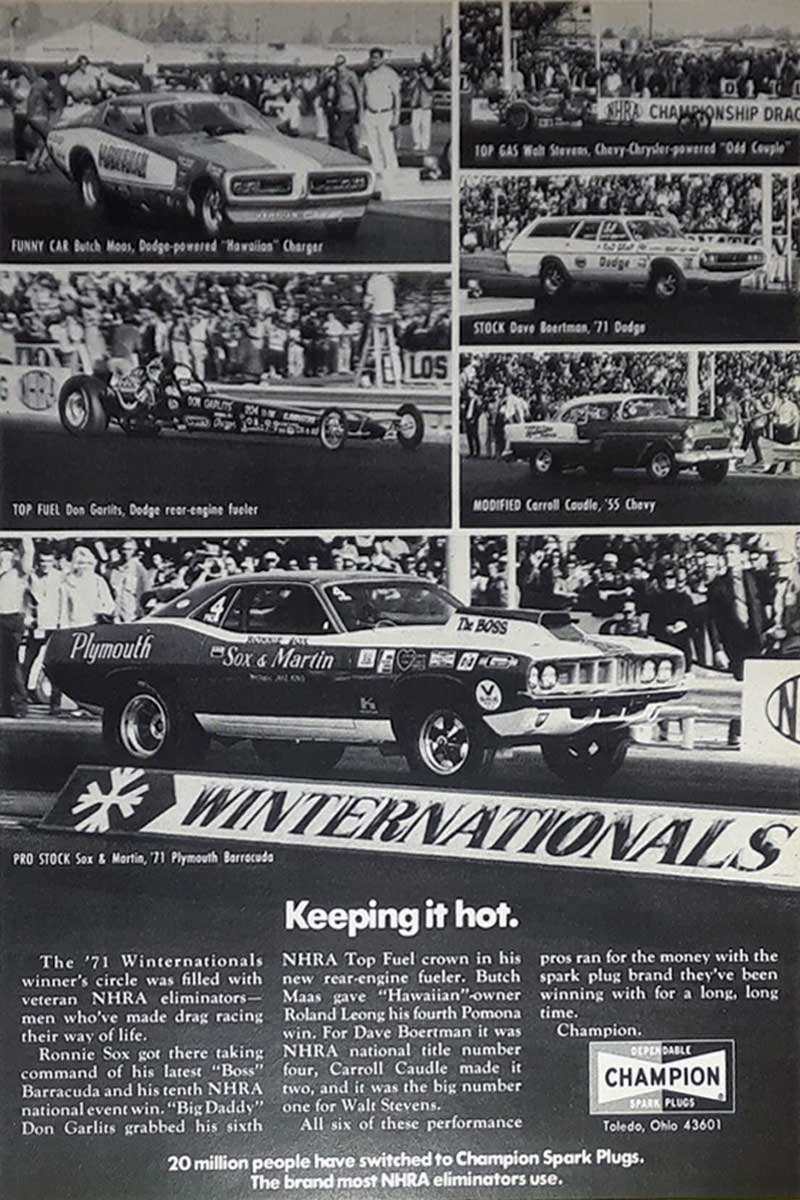
Above: Champion dominated the winner’s circle at the 1971 NHRA Winternationals. Mopar was well represented, winning Pro Stock – Sox & Martin, Top Fuel – “Big Daddy” Don Garlits, Funny Car – Butch Mass in Roland Leong’s Hawaiian, Stock Eliminator – Dave Boertman, and Top Gas – Walt Stevens, with one (of two) engines being a Chrysler.
Champion sponsored the team. Sox & Martin appeared in Champion ads throughout the early ’70s, promoting their plugs with taglines about “winning performance.” For Champion, having Ronnie Sox, “Mr. Four-Speed,” and the winningest Pro Stock team of the era running their plugs was powerful marketing.
The performance fit of Champion’s N-series racing plugs matched up well with Chrysler’s Hemi combustion chambers and the harsh environment of Pro Stock racing. Jake King, Sox & Martin’s chief mechanic, trusted them to fire under enormous 12.5:1 cylinder pressures.
Above: Sox & Martin dominated the first year of Pro Stock (1970), and the team continued its successful Performance/Supercar Clinics across the country.
Sox & Martin represented professionalism and credibility. Champion positioned itself the same way: not flashy gimmicks, but solid, proven ignition. The relationship made sense both technically and from a public image perspective.
Today, Champion is still a major brand under DRiV (Tenneco). They supply plugs for modern cars, motorcycles, small engines, and, of course, racing. To pick up a set of plugs for your Mopar, check out Mancini Racing or YearOne. After all these years, the Champion name still carries heritage value in the muscle car and racing community, especially tied to Mopar legends like Sox & Martin.


